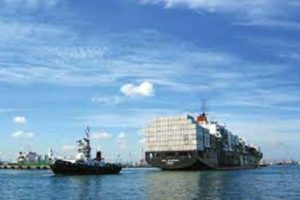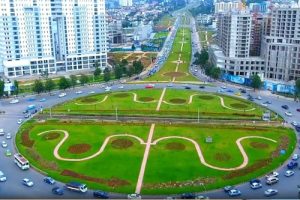
Since the imperial era, for the last 70 years, Ethiopia has established good diplomatic relations with the countries across the globe. Through utilizing its diplomatic corridor, it could obtain financial, technical and consultancy supports. It enabled to establish educational institutions from the elementary level up to the tertiarylevels and produced well-trained human resources used as inputs in various economic sectors. During his formative years, the Emperor laid the foundation which gears the nation towards economic growth with the support of the western countries.
In the 1950s, with the support of the US based Oklahoma University, Ethiopia was able to establish the Haromaya Agricultural College. The institute has played pivotal role in supplying trained youth to the agriculturalmarket and supported the nation that is striving to improve farming practices through providing extension services to farmers. Similarly, Ambo and Jimma agricultural colleges were established with the financial support of the West and Scandinavian countries. Both are playing vital roles in supplying trained manpower to the market since then.
In the 1960s, the Bahir Dar Polytechnic College was established by the technical and financial support of the then Soviet Union and the institute contributed to the nation’s economic growth by supplying technicians to the manufacturing sector. The Addis Ababa University,since it was established in 1950s by the support of the western countries,has produced well educated graduates both in social and natural science fields.
The country also mobilized financial resource from the World Bank, the International Monetary Fund and from the western countries through bilateral relations and more or less the system witnessed economic growth.
During the Derg era, Ethiopia brought to halt its relation with the West due to ideological difference and rather established strong diplomatic ties with the socialist countries. It obtained more of military support from these countries than any other aid. The drying up of financial and economic supportsfrom the West and the internal political instability dragged the nation’s economic growthbackward. The result had been a negative economic progress.
In 1991, when the defunct EPRDF regime assumed power, it reinvigorated Ethiopia’s relation with the West and established good relations based on mutual benefit. Looking the political development in Ethiopia optimistically, they supported the government by providing billions of Dollars in the form of loan and grant and the regime had been able to stimulate the economy and registered substantial economic growth.
Ethiopia’s economy during the EPRDF regime had achieved a growth rated 9.9%on average between the years 2007 and 2018. The regime had also established strong economic ties with China and obtained supports particularly one that was funneled to the construction sector, infrastructure such as roads and rail ways boomed as a result. The electrified Addis Ababa Light Rail Transit and the Ethio- Djibouti rail waycan be taken as good examples. Hydropower dams, wind farms and industry parks are also mushroomed. The flourishing of foreign investment was also the other benefits of the relations.
Ethiopia’s relation with the Western and Eastern World has steadily continued well during the current government that is led by Prime Minister Abiy Ahmed (PhD) and the financial and economic support particularly from the West has continued based on the multilateral and bilateral relations until the outbreak of the war in the northern part of Ethiopia in 2021.
Ethiopia is the second most populous nation in Africa after Nigeria with about 123 million people and one of the fastest-growing economies in the region, with an estimated 7.2% growth in the FY 2022/23,according to the World Bank. However, it is also underdeveloped with a per capita income of about USD 1,020. Aiming to reverse this scenario, Ethiopia’s current incumbent aspires to reach lower-middle-income status by 2030.
The consistently high economic growth over the last decade has resulted in positive trends in poverty reduction in both urban and rural areas. The share of the population living below poverty line decreased from 30% in 2019 to 24% in 2024 and human development indicators improved as well. Ethiopia’s strong growth rate builds on the government’s homegrown economic reform and the ten years perspective development plan. Among other factors, the growth is led by capital accumulation, intensifying agriculture, expanding manufacturing sector focusing on agro-processing and import substitution among others. Ethiopia’s real Gross Domestic Product (GDP) growth wasslowed down from the year 2019/20 to 2021/22 due to multiple shocks including COVID-19.However, agriculture, where over 70% of the population is employed, was not significantly affected by the COVID-19 pandemic, and its contribution to the growth slightly improved compared to previous years.
In addition, because of the outbreak of war in the northern part of the country, the WesternWorld, particularly, the US unfairly accused Ethiopia forthe alleged violation of human rights, war crime, and sexual harassment and the like consequently imposed unilateral sanction.
Nevertheless, following the Pretoria Peace Agreement reached between the government of Ethiopia and the TPLF in 2022, both parties silenced the guns and halted the war and later, the West welcomed the progress and has improved its relations with Ethiopia. Currently, Ethiopia enjoys good relations both with the Western and Eastern Countries. In addition, new horizons of financial sources are also emerging.
In this regard, one can mention the BRICS bloc that Ethiopia has joined recently as a good example. It has brought better opportunity tothe country to attain economic progress through obtaining access to loan from the member countries; to tap in their market;to attract foreign investmentand take the opportunities for knowledge and technology transfer.
As it is understood, when compared to the other BRICS member countries, Ethiopia’s economy is small but the country is located in the strategically important area of the Horn of Africa which is flanked with the Red Sea and the Indian Ocean. Red Sea is the water root where 40% of the world’s petroleum oil is transported to Europe via Suez Canal. This again elevates the strategic importance of the nation in the Horn of African region. Attracted by the strategic value of the area, Western Countries such as USA, France, China, and Turkeyand Russia established their military base in Djibouti, Somalia and Port Sudan. Hence, Ethiopia must exploit its strategic significance through strengthening its multilateral relations.
Ethiopia’s aspiration of becoming a middle income economy needs a huge finance. The country has embarked upon the second phase of the home-grown economic endeavors. The plan aims to foster efficiency and introduce competition in key growth-enabling sectors such as agriculture, manufacturing, service, tourism, mining and others like energy, logistics, and telecom thatimprove the business climate, and address macroeconomic imbalances.
Ethiopia seeks to chart a development path that is sustainable and inclusive in order to accelerate poverty reduction and boost shared prosperity. Significant progress in job creation as well as goodgovernance will be needed to ensure that growth is equitable across the society. Achieving these objectives require addressing key challenges, such as macro-economic imbalancethat constrained private sector’s development, structural transformation, job creation and reducing conflicts among others.
While exports and foreign direct investment rebounded in 2020/21 and jobs have been recovering, some lasting scars are likely to remain. Urban employment levels have not been fully recovered; some households and firms continue to report income losses and inflation needs more attention.
Food insecurityhas continued to affect the nation’s economic growthdue to bad weather condition and related problems. Besides, locust invasion, conflicts, and global conditions are contributing for the skyrocketing inflation. Frequent severe weather condition,accompanied by long-term climate change is highlyimpacted the agriculture and pastoral livelihoods as well as food security. The 2022 drought is the worst in forty years’ history of the country by severely affecting millions in the southern and eastern parts of the country.
The country’s growing workforce (with roughly 2 million persons reaching working age per year), puts pressure on the absorption capacity of the labor market.It necessitates creating sufficient new jobs. In addition, exploring and exploiting natural resources through utilizing foreign and local investment is vital. Side by side with this, boosting export should be strengthened so that the nation can create wealth which could be used for poverty reduction.
BY ABEBE WOLDEGIORGIS
THE ETHIOPIAN HERALD FRIDAY 14 JUNE 2024





